-
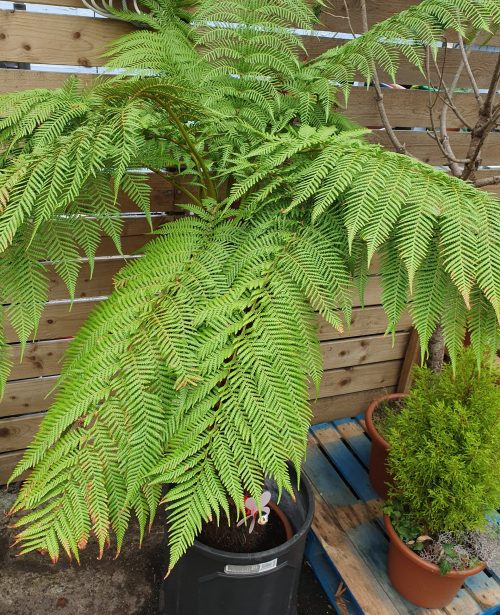
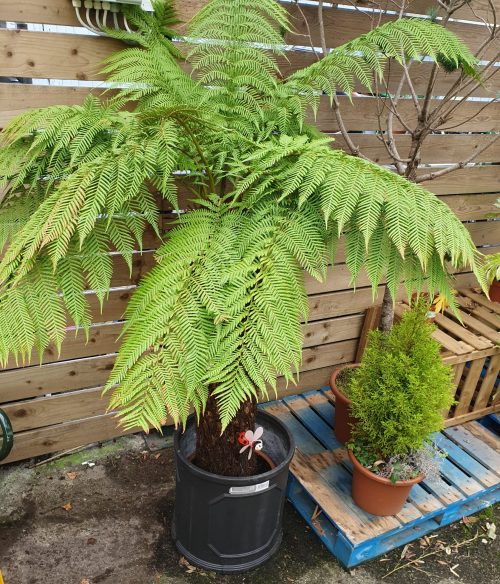 Native to coastal parts of Australia, Dicksonia antarctica is a magnificent, slow-growing, evergreen tree-fern (deciduous in colder areas) and one of the easiest to grow. The brown, fibrous ‘stem’ slowly grows taller, crowned by a rosette of beautiful, glossy, deep green fronds up to three metres long – a wonderfully architectural plant. Winter protection essential in all but the mildest areas – wrap the top of the ‘stem’ in fleece and protect the growing point in the crown with straw or similar insulation, and if pot-grown, bring inside or insulate the pot. Water the stem in hot weather; do not water the crown in winter. Site: Sheltered, sheltered coastal Soils: Moist but well-drained, acid to neutral soil Position: Partial shade or dappled shade Season of interest: Most of the year Hardiness: Frost-hardy Height to 13’ (4m) Spread to 13’ (4m)
Native to coastal parts of Australia, Dicksonia antarctica is a magnificent, slow-growing, evergreen tree-fern (deciduous in colder areas) and one of the easiest to grow. The brown, fibrous ‘stem’ slowly grows taller, crowned by a rosette of beautiful, glossy, deep green fronds up to three metres long – a wonderfully architectural plant. Winter protection essential in all but the mildest areas – wrap the top of the ‘stem’ in fleece and protect the growing point in the crown with straw or similar insulation, and if pot-grown, bring inside or insulate the pot. Water the stem in hot weather; do not water the crown in winter. Site: Sheltered, sheltered coastal Soils: Moist but well-drained, acid to neutral soil Position: Partial shade or dappled shade Season of interest: Most of the year Hardiness: Frost-hardy Height to 13’ (4m) Spread to 13’ (4m) -
Out of stock
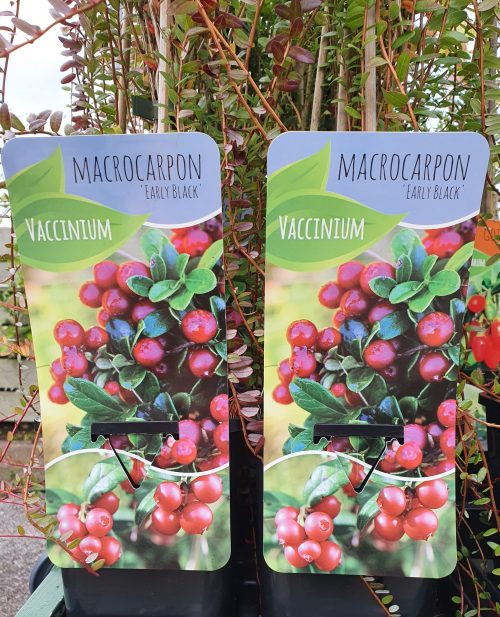
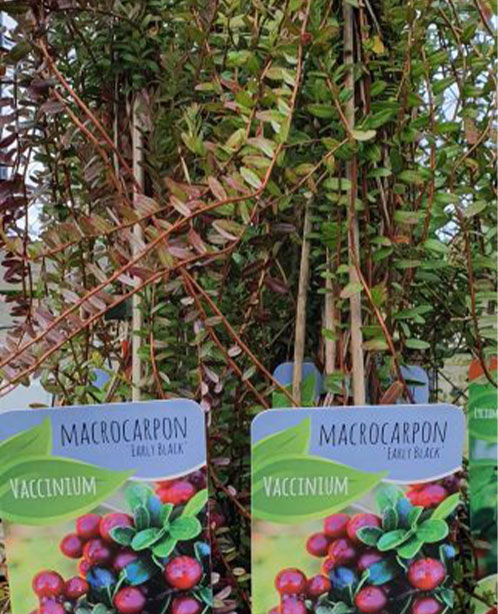 The fruits of 'Early Black' aren't actually black - starting off bright red they ripen to a deep purple-red that could easily be mistaken for black. But it certainly lives up to the 'Early in its name, cropping from late August - which makes it the earliest variety. High in Vitamin C, the fruits can be made into pies and puddings, crushed and made into juice, or made into Cranberry Jelly - perfect for the Christmas Turkey! Growing to a maximum of around 2 feet (60 cm) tall, this small evergreen bush does best in a full sun or a semi-shade position where it can be allowed to scramble as it wishes. Harvest from late August. Suitable for both open ground or container growing. For open ground planting plant 12" x 12" (30 x 30 cm) apart. Ericaceous, so will require soil or compost of an acidic nature. Self-fertile.
The fruits of 'Early Black' aren't actually black - starting off bright red they ripen to a deep purple-red that could easily be mistaken for black. But it certainly lives up to the 'Early in its name, cropping from late August - which makes it the earliest variety. High in Vitamin C, the fruits can be made into pies and puddings, crushed and made into juice, or made into Cranberry Jelly - perfect for the Christmas Turkey! Growing to a maximum of around 2 feet (60 cm) tall, this small evergreen bush does best in a full sun or a semi-shade position where it can be allowed to scramble as it wishes. Harvest from late August. Suitable for both open ground or container growing. For open ground planting plant 12" x 12" (30 x 30 cm) apart. Ericaceous, so will require soil or compost of an acidic nature. Self-fertile. -
Out of stock
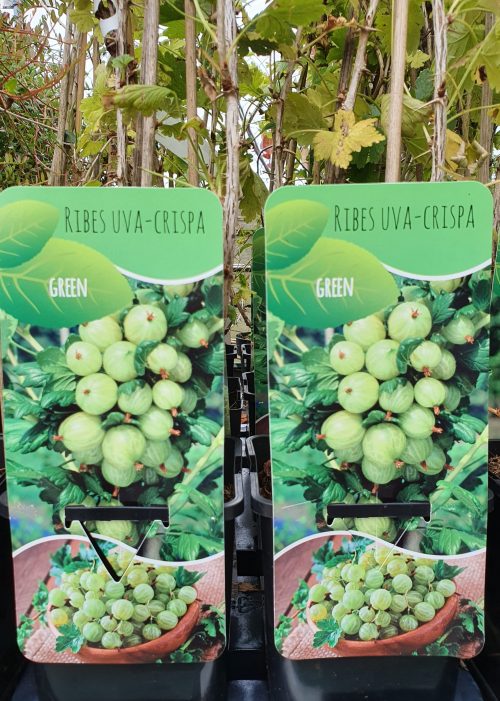
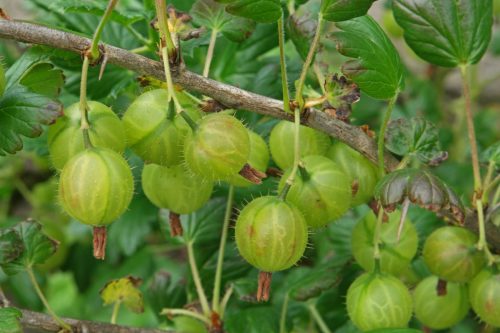
Gooseberries are a staple of the British cottage garden. They’re easy to grow and can thrive in many kinds of soil, as long as they’re grown in full sun. Grow them as compact bushes or train them against a wall. You can also grow gooseberry bushes in containers.Grow in fertile, well-drained soil in a sunny, sheltered site. If growing as a bush, prune gooseberries annually to maintain an open, bowl-shape, which makes picking easier. How to grow Ribes uva-crispa
-
Plant size
1.5m height
1.5m spread
-
Aspect
South facing, west facing
- Sun exposure: Full sun
- Hardiness: Hardy
- Soil type: Well drained / light / sandy
-
-
Out of stock
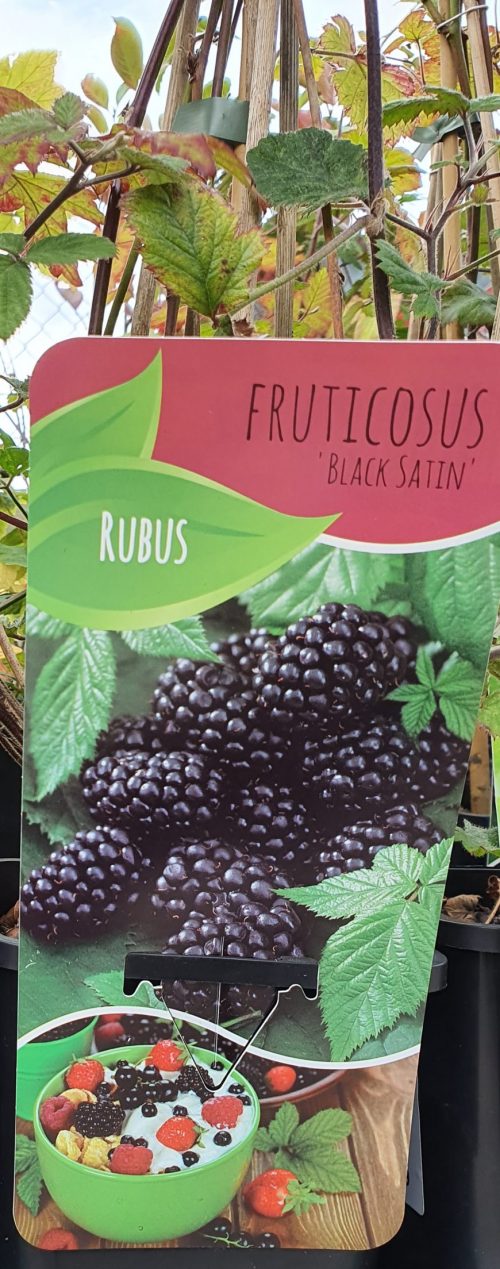
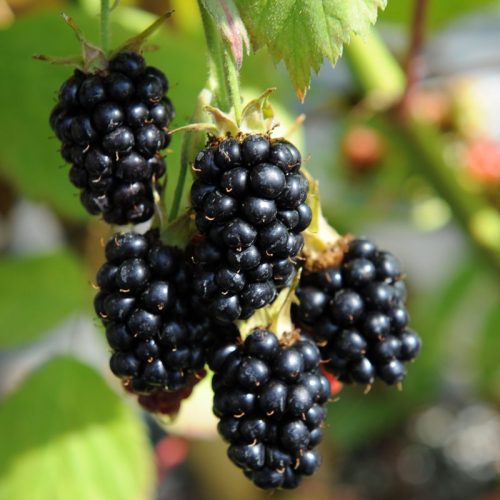 A thornless, American-bred blackberry, Rubus fruticosus Black Satin produces medium to large, rounded, black very juicy berries with a delicious, rather sharp flavour from late July, earlier than most thornless blackberries. Beautiful pale pink flowers and fruit are borne on two-year-old wood; yields are high and reliable. Blackberry Black Satin is a deciduous shrub with upright canes, to 10’/3m, which should be tied into post and wire supports or wires on a warm wall or fence to keep the plant from running rampant and make harvesting easier; cut down fruited canes and tie in new growth after the harvest. Good plant for pollinators. Site: Warm, sheltered, sunny site Soil: Any reasonable, well-drained soil, preferably neutral Position: Full sun Pick: From late July and through August Keep: Fruit does not keep, but freezes well Hardiness: Fully hardy Pollination: Self-fertile Uses: Eating fresh, cooking, preserving
A thornless, American-bred blackberry, Rubus fruticosus Black Satin produces medium to large, rounded, black very juicy berries with a delicious, rather sharp flavour from late July, earlier than most thornless blackberries. Beautiful pale pink flowers and fruit are borne on two-year-old wood; yields are high and reliable. Blackberry Black Satin is a deciduous shrub with upright canes, to 10’/3m, which should be tied into post and wire supports or wires on a warm wall or fence to keep the plant from running rampant and make harvesting easier; cut down fruited canes and tie in new growth after the harvest. Good plant for pollinators. Site: Warm, sheltered, sunny site Soil: Any reasonable, well-drained soil, preferably neutral Position: Full sun Pick: From late July and through August Keep: Fruit does not keep, but freezes well Hardiness: Fully hardy Pollination: Self-fertile Uses: Eating fresh, cooking, preserving -
Out of stock
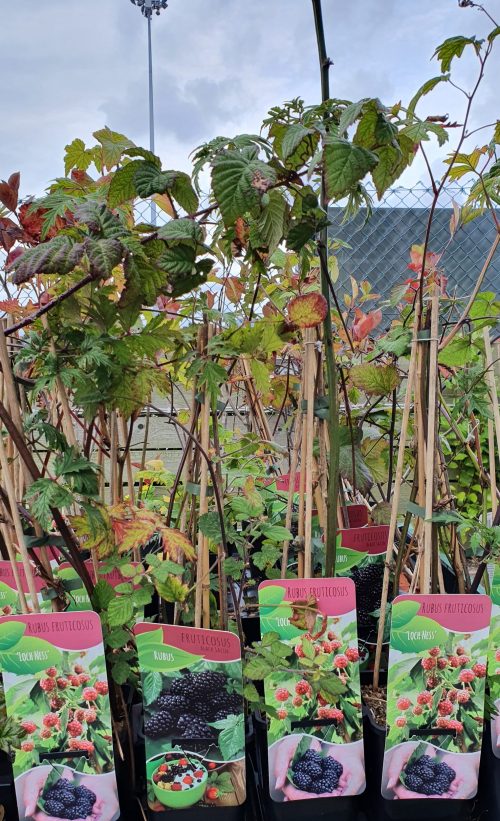
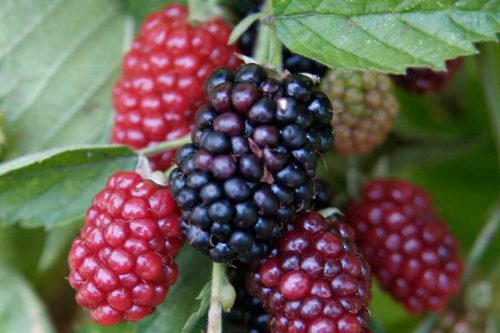 2.5m ht x 2.5m sp 2-5 years until maturity ‘Loch Ness’ is a moderate-sized bush with upright thornless canes, white flowers in summer followed by dark blackberries in late summer.
2.5m ht x 2.5m sp 2-5 years until maturity ‘Loch Ness’ is a moderate-sized bush with upright thornless canes, white flowers in summer followed by dark blackberries in late summer.Foliage
DeciduousHabit
SpreadingFlower
White in SummerFoliage
Dark-green in Spring; Dark-green in Summer; Pale-yellow in AutumnHOW TO CARE
Watch out for
Pests
It is best to rotate crops to avoid pest and disease problems.Specific pests
Aphids , Leafhoppers , Raspberry beetle , Raspberry leaf and bud miteGeneral care
Pruning
Prune old canes to ground level in late winter and tie in new canes.Propagation methods
LayeringWHERE TO GROW
Rubus fruticosus 'Loch Ness' (Blackberry 'Loch Ness') will reach a height of 2.5m and a spread of 2.5m after 2-5 years.Suggested uses
Add to salads, Banks and Slopes, Cake decoration, Containers, Cottage/Informal, Flavouring food and drinks, Hedging/ScreensCultivation
Plant outdoors in summer in well-drained neutral soil.Soil type
Clay, Loamy, SandySoil drainage
Moist but well-drained, Well-drainedSoil pH
NeutralLight
Full SunAspect
South, East, WestExposure
Sheltered -
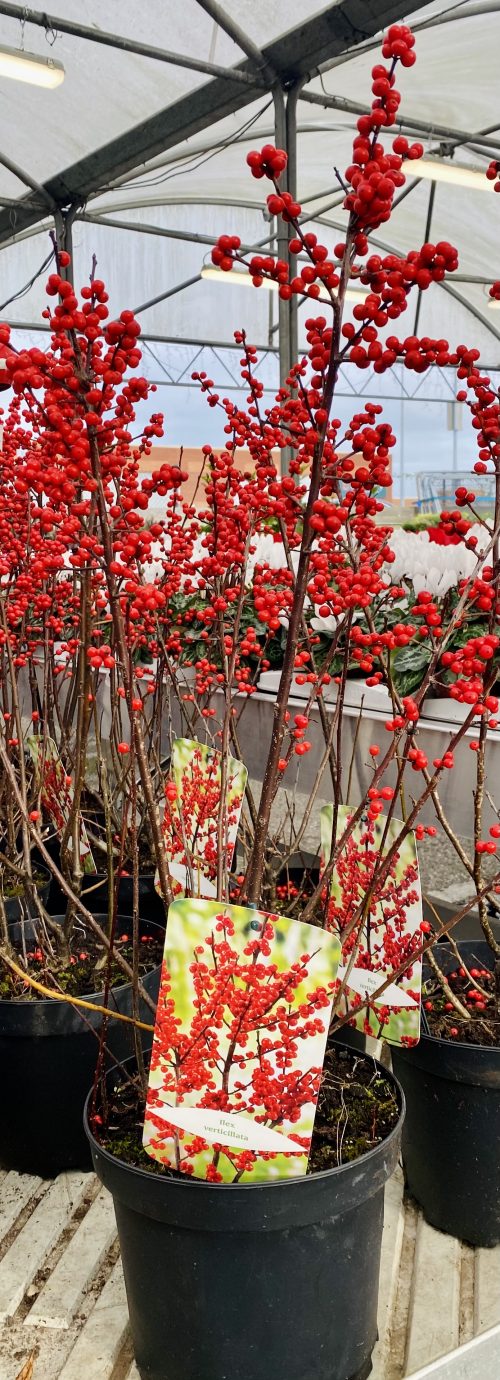 This Ilex Verticillata has magnificent red berries from autumn through to winter. It can be placed in full sun or semi shade. It is 200cm approx. and pruning is not recommended.
This Ilex Verticillata has magnificent red berries from autumn through to winter. It can be placed in full sun or semi shade. It is 200cm approx. and pruning is not recommended. -
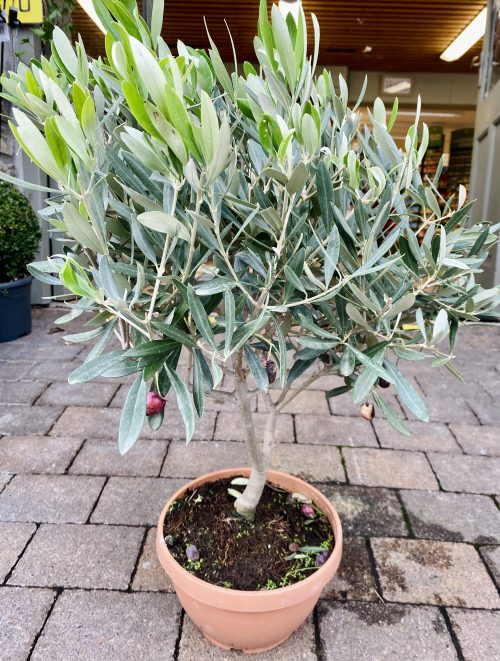 The Irish weather is perfect for growing Olive Trees as they can withstand the cold up to -15 degrees. They are slow growing and compact so they are ideal for small gardens or terraces and their evergreen grey-green foliage is a lift to any area.
The Irish weather is perfect for growing Olive Trees as they can withstand the cold up to -15 degrees. They are slow growing and compact so they are ideal for small gardens or terraces and their evergreen grey-green foliage is a lift to any area. -
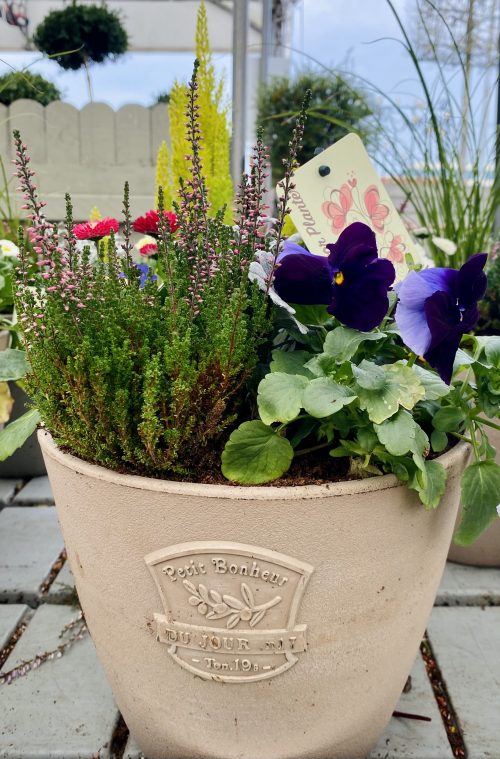 Winter planted containers hold a variety of winter bedding such as Cyclamen, Pansies and Heathers. Perfect to add a pop of colour to your garden this winter. Ideal for small gardens and terraces or to add a bit of character near your front door. These plants will stay in flower until Jan/Feb.
Winter planted containers hold a variety of winter bedding such as Cyclamen, Pansies and Heathers. Perfect to add a pop of colour to your garden this winter. Ideal for small gardens and terraces or to add a bit of character near your front door. These plants will stay in flower until Jan/Feb. -
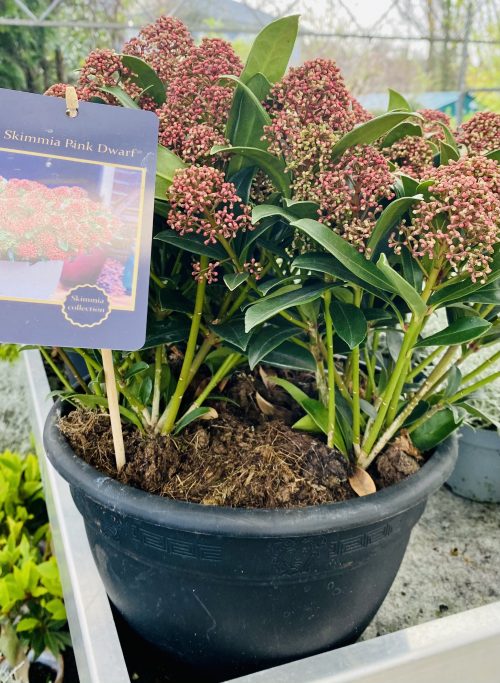 The Pink Dwarf is a compact growing Skimmia. Pink flower buds form in the autumn and and open to reveal pale pink flowers between March and May. Place in full sun/shade.
The Pink Dwarf is a compact growing Skimmia. Pink flower buds form in the autumn and and open to reveal pale pink flowers between March and May. Place in full sun/shade. -
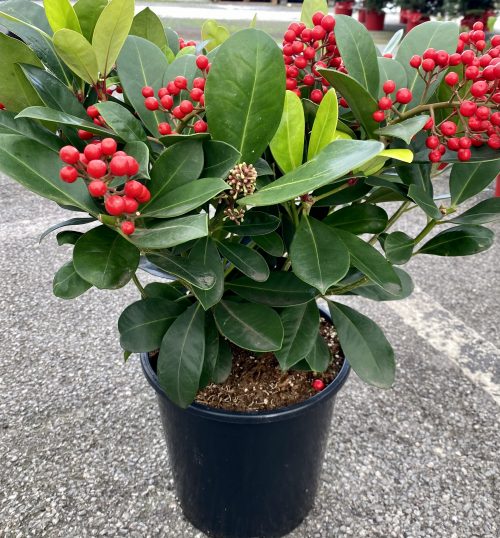 Skimmia Japonica 'Chameleon' has beautiful red berries right up to March/April and then white flowers will bloom for the summer. Perfect in sun or shade and can be kept in a pot or planted into the ground.
Skimmia Japonica 'Chameleon' has beautiful red berries right up to March/April and then white flowers will bloom for the summer. Perfect in sun or shade and can be kept in a pot or planted into the ground. -
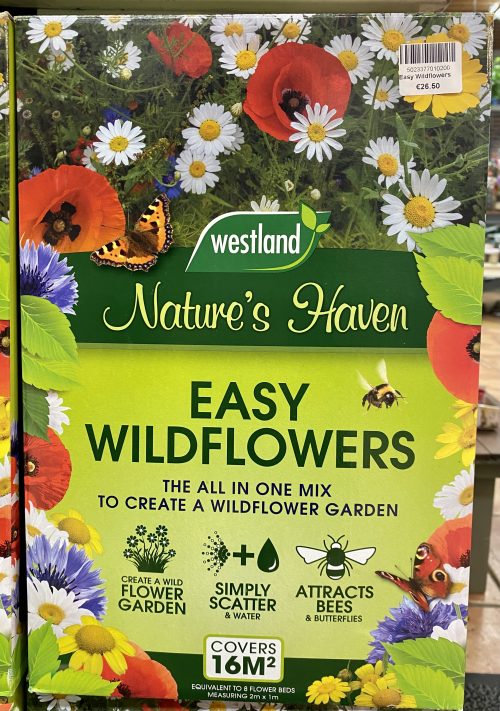 Easy Wildflowers are ideal for someone who wants to attract bees, butterflies or other beneficial insects to their garden. Simply scatter the seeds where you would like them to grow, as evenly as possible, and then rake the ground to mix the seeds with the soil. Water regularly, especially in the drier seasons.
Easy Wildflowers are ideal for someone who wants to attract bees, butterflies or other beneficial insects to their garden. Simply scatter the seeds where you would like them to grow, as evenly as possible, and then rake the ground to mix the seeds with the soil. Water regularly, especially in the drier seasons.